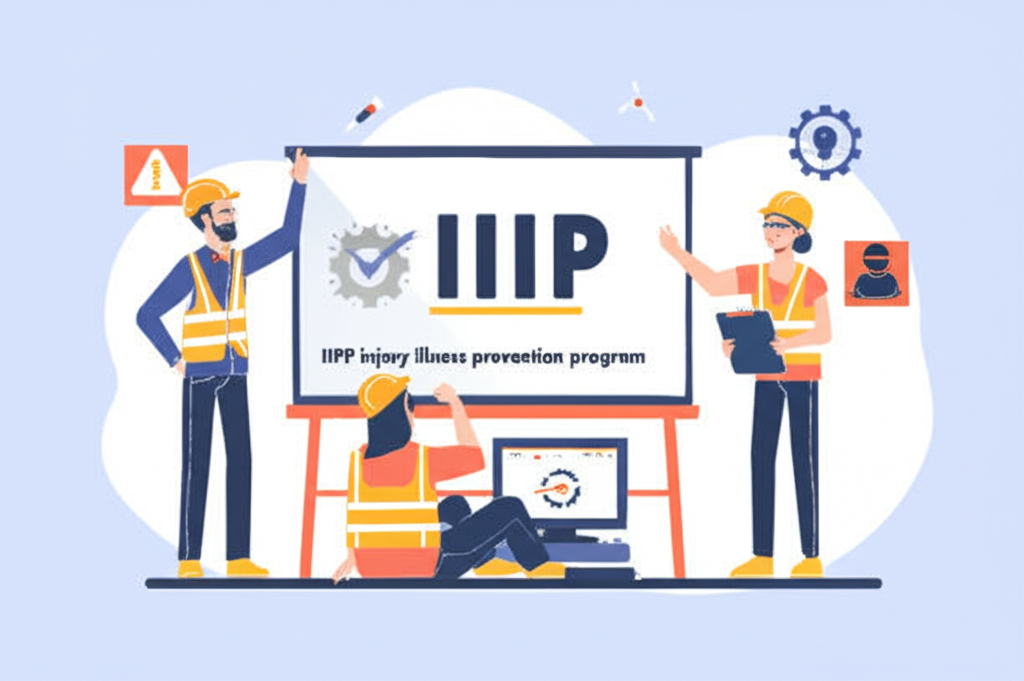Breaking Down the 13+ Requirements of California's SB 553 Workplace Violence Prevention Plan
Feeling Overwhelmed? Your Simple Guide to What MUST Be in Your WVPP

Introduction
Is your head spinning trying to figure out California's new Workplace Violence Prevention Plan (WVPP) required by SB 553? You're not alone. Many HR and operations managers feel overwhelmed by the complexity and the fast-approaching July 1, 2024 deadline.
The law requires more than just downloading a generic template; it demands a detailed, written plan tailored specifically to your workplace. But what exactly needs to go into it?
Let's break down the essential sections mandated by the law in simple terms, so you can stop feeling lost and start building a compliant plan with confidence.
What Your SB 553 WVPP Absolutely MUST Include:
The law outlines over a dozen specific components. Think of them as building blocks for your plan. Here's a simple breakdown:
1. The Foundation: Who, How, and Working Together
Who's in Charge? (Responsibility): Your plan needs to clearly state the name(s) or job title(s) of the person responsible for the WVPP. No confusion about who owns it.
Getting Your Team Involved (Employee Involvement): How will you get input from your employees and their representatives (if any) when creating, implementing, and reviewing the plan? SB 553 requires their active participation.
Playing Nice with Others (Coordination): If you share your worksite with other employers (like contractors or staffing agencies), how will you coordinate your WVPP efforts with them? Everyone needs to be on the same page.
2. Core Procedures: Reporting, Responding, and Communicating
Safe Reporting (Reporting Procedures): How can employees report violence, threats, or concerns easily and without fear of getting in trouble? Your plan needs a clear, confidential process.
Making Sure It Sticks (Compliance & No Retaliation): How will you ensure everyone (supervisors and staff) follows the plan? You also MUST state clearly there's no punishment for reporting issues.
Keeping Everyone Informed (Communication): How will you communicate with employees about potential threats, incidents, investigations, or updates to the plan?
Handling Emergencies (Emergency Response): What are the specific steps for different workplace violence emergencies? Think alerts, evacuations, lockdowns, contacting police, etc.
3. Proactive Steps: Training and Hazard Management
Getting Trained Up (Training Procedures): Your plan must describe how you'll provide the required training – initially (by July 1!) and then annually for all employees.
Finding the Risks (Hazard Identification & Evaluation): How will you actively look for and assess potential violence hazards specific to your workplace? This includes doing regular inspections.
Fixing the Risks (Hazard Prevention & Control): Once you find hazards, how will you fix them in a timely manner? Your plan needs procedures for implementing controls (like better lighting, security measures, policy changes).
4. Ongoing Management: After Incidents, Reviews, and Records
After an Incident (Post-Incident Response & Investigation): What happens after an incident? Your plan needs steps for responding immediately and investigating what happened to prevent it from recurring.
Keeping it Fresh (Plan Review & Revision): How will you review your WVPP's effectiveness at least annually (and after incidents)? Your plan needs a process for updates, including employee input.
The All-Important Log (Violent Incident Log): You MUST keep a detailed log of every workplace violence incident (even threats or incidents without injury). Your plan needs to mention this log.
Feeling the Complexity?
Yes, that's a lot! Each of these points requires careful thought and customization for your specific business. Simply copying a template likely won't cover all your unique risks or meet Cal/OSHA's expectation for an "effective" plan.
Conclusion: Your First Step Towards Compliance
Understanding these required components is the crucial first step in tackling SB 553. While it seems complex, breaking it down section by section makes it more manageable.
Remember, the goal is to create a safer workplace, and having a thorough, customized plan is key. Don't wait – the July 1, 2024 deadline is here.
Need the official template to get started? You can find Cal/OSHA's Model WVPP and helpful Fact Sheets on the official Cal/OSHA website. Search for "Cal/OSHA Workplace Violence Prevention General Industry".
Need Help With Your SB 553 WVPP?
Our compliance experts can help you develop a comprehensive, customized WVPP that meets all 13+ requirements before the deadline.